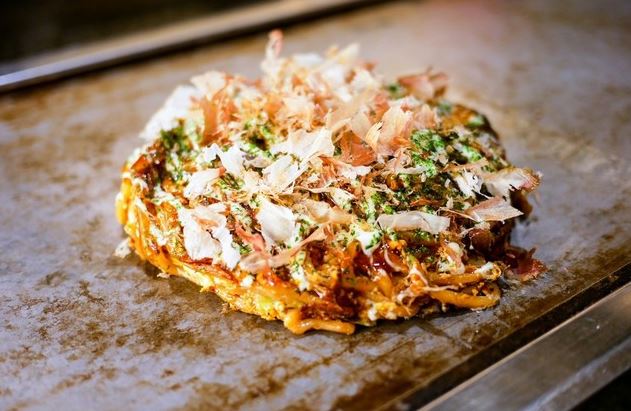
Okonomiyaki
Its Roots Are in Sen no Rikyu’s Tea Ceremony?
The details about the roots of okonomiyaki (made by mixing flour and water with vegetables, meat or seafood and cooking the mixture in a round shape on an iron plate) are not known. However, one explanation says that if you trace back to the origin of okonomiyaki you will arrive at Sen no Rikyu, the great tea master of the Azuchi-Momoyama period (1568 to 1603).
Having said this, however, it does not mean that Sen no Rikyu invented okonomiyaki. Strictly speaking, the explanation says that okonomiyaki has its roots in the confectionary that Sen no Rikyu often served at his tea ceremonies.
According to the book “Rikyu Hyakkaiki” that recorded Rikyu’s tea ceremonies, Rikyu served the confectionary called “funoyaki” in 68 tea ceremonies out of the 88 tea ceremonies he held.
During a tea ceremony, two or three types of confectionary are served. But still, it can be said that being served 68 times out of a total of 88 times is a fairly high percentage.
This funoyaki is the confectionary that is said to be the roots of okonomiyaki.
Funoyaki consisted of flour dissolved in water that was spread out into a circle about 10 centimeters in diameter on a hot plate and cooked. In present day terms, it was like a thin crepe. After being cooked, miso was then spread on the funoyaki.
This was finally rolled up into a cylinder or folded into a fan shape and presented to the guests. Since chopped walnuts, sugar, poppy seeds, and other such items were mixed into the miso that was spread on the funoyaki, the taste was fairly rich. At tea ceremonies, this funoyaki appears to have been presented between the meal and the tea. The recipe of cooking flour dissolved in water is also similar to that of monjiyaki during the Edo period. Moreover, this monjiyaki is considered to have developed into monjayaki and okonomiyaki.
It cannot be said conclusively that monjiyaki originated from funoyaki. However, it would be amazing if the roots of okonomiyaki that everyone cooks and eats with a lot of fuss were really in the tea ceremony which embodies the idea of wabi (an aesthetic principle originating in the lifestyle and thoughts of hermits in medieval times) and sabi (another moral and aesthetic principle).



0件のコメント